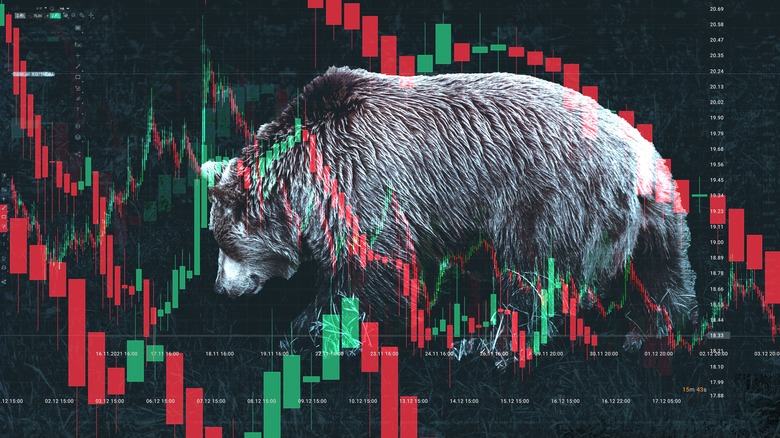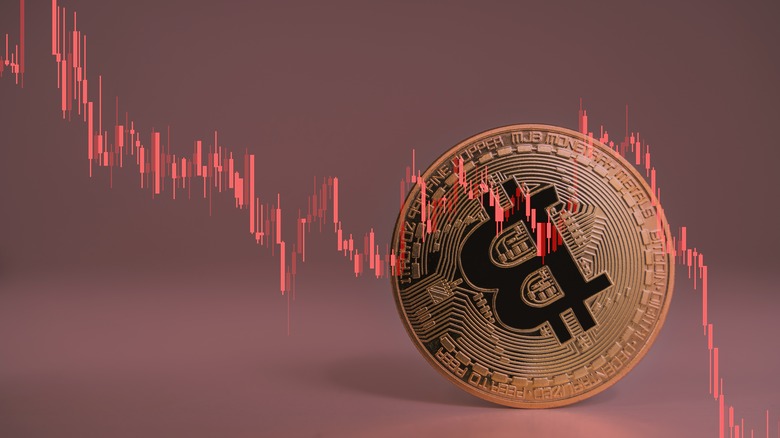The Most Important Things To Understand About This Crypto Winter
Cryptocurrencies are experiencing a major, commodity-wide contraction that began in earnest in the final months of 2021. Bitcoin, Ethereum (down 49% and 45% from September 2021, respectively), and other stablecoin entities hit a period of freefall that was dubbed the Crypto winter in a June blog post by Gemini's leadership, Tyler and Cameron Winklevoss (via Gemini).
The pain that crypto investors are feeling at this moment seems to be linked to continued instability in the global financial marketplace, according to a report by Forbes Advisor. But this doesn't mean that the viability of cryptocurrencies as an alternative finance vehicle, or as an investment commodity, has ended. Instead, it simply signals vulnerabilities inherent to the assets in the same way that traders engaged in the stock, bullion, or real estate markets might seek to understand as they make their way through a time of depressed pricing levels.
The crypto winter conditions that have settled over the industry can be felt in both the pricing of the assets themselves and in the fortunes of cryptocurrency-aligned brands. Coinbase, for instance, has seen a price crater of about 76% in the last year, according to MarketWatch.
Exploding Topics noted that around one billion global traders would own cryptocurrencies in 2022, making the asset class something certainly newsworthy. It may be for this reason that a crypto winter is particularly poignant in relation to other economic woes that consumers are experiencing these days.
Look to inflation reduction measures as a bellwether of sorts
Inflation has run wild in the last year, leading directly to a steep decline in pricing of both stock assets and cryptocurrency commodities. Economics Help reports that economic demand increases coupled with trouble on the supply side of the equation can lead to a rapid spike in inflation.
The coronavirus pandemic, the blockage of the Suez Canal, and a massive drop in tech stock value to start 2022 have continued to pummel financial stability in every corner of the world. With global fiat currencies in crisis and U.S. inflation at 8.2%, as of September 2022 (via Trading Economics), it's no wonder why governments are scrambling to cool off the immensely overheated marketplace.
The Ukrainian war has also changed the calculus of fiscal stability in both obvious and hard-to-define ways. For one thing, money and resources are pouring into the country from western Europe, North America, and elsewhere to help the nation's military defend against invasion. Warfare strains the economic balance in nuanced ways and has played a direct role in budgetary decisions across the world.
More subtly, the Centre for Economic Policy Research reports that Ukraine is a substantial global exporter of corn, wheat, and other products. These are essential for animal feed and human consumption alike, placing a new strain on an overtaxed global supply chain.
Consider a longer-term strategy shift to account for continued structural changes to the market
While crypto assets remain a decentralized fiscal commodity, fiat currencies and global economics continue to act as a driving force for all investment opportunities, including the world of cryptocurrencies. It may be difficult to see the link between food products and crypto assets, but as Forbes Advisor notes, U.S. dollar stability and federal interest rates act as the biggest drivers of crypto continuity — in short: Interconnectivity across markets and commodities is unavoidable.
Crypto winter conditions have happened before, and, as with any other commodity that traders flock to, it will happen again in the future. Fortunately, this surge of downward price pressure won't last forever – Forbes notes that crypto winters appear to last around four years, on average. Investopedia suggests that bear markets provide investors with unique opportunities that may not be viable in rising, bull markets.
This new reality may dominate the way forward for the time being. With a foot firmly placed in fiat-tethered coins, the crypto market will take its lead in large part from the health of national and global finance.


